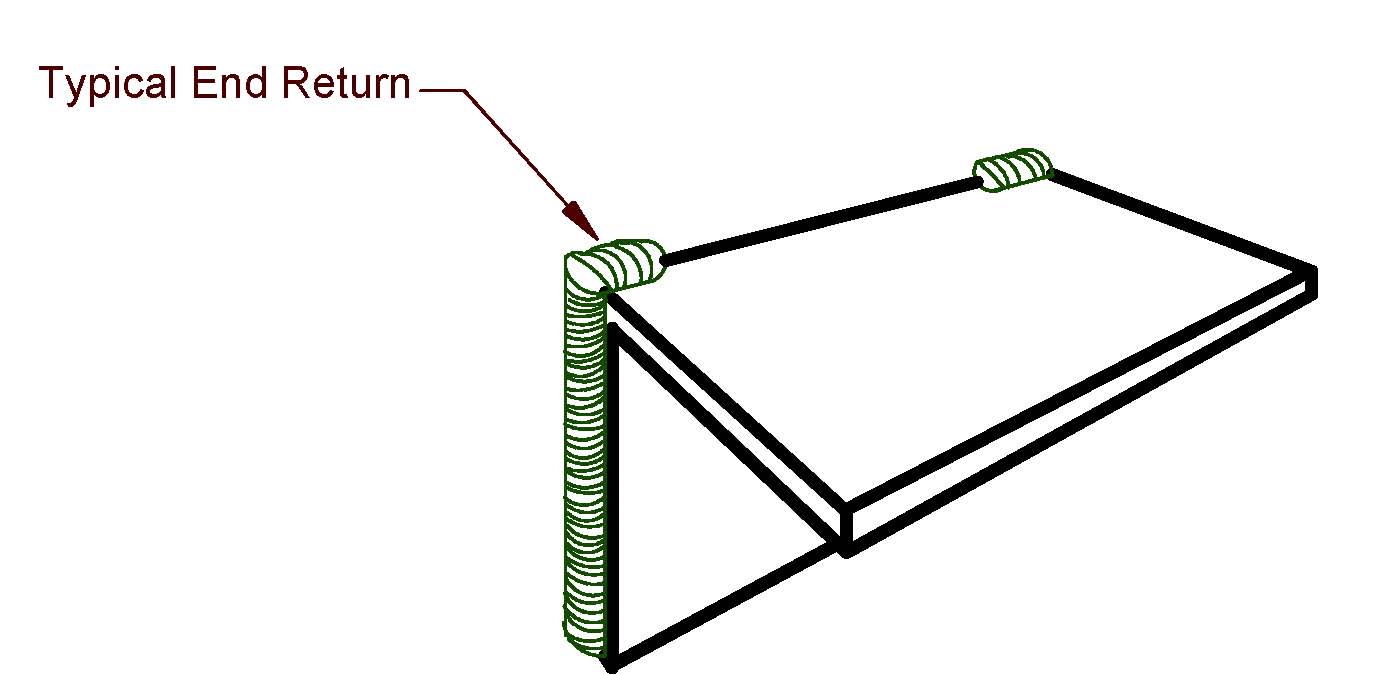This is a common problem, often brought about by a particular shop's common practice.
A lot of Welders have been taught to always wrap welds around the end of a gusset, whether it says to on the drawing or not, because "It makes it stronger".
Also, some shops want everything seal welded to prevent corrosion, and will do so regardless of the weld symbols on the drawing.
I'm not saying this is right or wrong, because it depends on the situation.
Some Engineers adamantly do not want welds wrapped around the ends of gussets, as a means of reducing paths for crack propagation.
In other words, if a weld develops a longitudinal throat crack on one side of the gusset, the crack can travel to the opposite side weld by means of the wrapped end. Without the wrapped end, the crack may stop when it extends end to end of an independent weld.
I'm not saying this is particularly sound judgment that can't be shot full of holes, it's simply what has been explained to me before as reasoning to avoid wrapped ends.
Let's use an ABS lifting eye as an example (see attached jpeg).
If a lifting eye is welded all the way around, a longitudinal throat crack can also propagate all around, resulting in potential catastrophic failure during a lift.
If a lifting eye is designed to use independent welds, where each weld or pair of welds provides the strength necessary to hold the expected load, then if one or two welds fail, the others provide redundancy as failure insurance.
At least that's they way I understand the reasoning behind the "Wrap or not to Wrap" question.
In the end, Al has it right as usual.
It's not up to the Inspector to determine best practice.
It's the Inspector's job to locate and document non-conformances with design requirements, to be dispositioned by others.
Tim

 By 803056
By 803056  Date
Date 08-08-2013 14:31
Edited 08-08-2013 14:38
Hello Tim;
Nice sketch and good explanation of how two separate welds are more resistant to crack propagation.
It takes a certain amount of force or "energy" to initiate a crack. Once the crack is present, it only takes about half the initial force to cause the crack to propagate. If the weld is divided into two separate welds of equal length (total) and equal size, it takes more force or energy to initiate a crack in the second weld when compared to the energy or force needed to extend the crack in a single weld.
This technique is one I take full advantage of when repairing large forging presses. The machines are self destruct machines that are subject to fatigue loading. Two welds of equal length and equal size separated by an unwelded space will out perform a single weld having the same total length and same size every time. When one weld breaks, the second weld is subjected to a higher load, but it absorbs more "damage" before initiating a crack than the single weld would. I look for ways to utilize crack arresters. For instance, I might use two 1/2 inch thick plates rather than a single 1 inch plate when I can separate the welds securing the plates to the frame of the machine. The two plates share the load equally once the load is evenly distributed as a result of plastic deformation that occurs during the initial loading of the welded assembly. Initially one plate will be loaded, but as it deforms by elastic or plastic deformation, the load is transferred into the second plate and the load is more evenly distributed. All the welds share the load. If one weld fails, another weld will be more highly loaded, but there is some time before the second weld fails. The chance of discovery is greater because there is more time between the initial weld failure and the second weld failure.
The bottom line is, once a crack is initiated, it take much less effort to extend the crack than it took to initiate the crack.
More weld isn't always better. A knife connection consisting of two angles placed back to back is a great example of where more weld is not better. The length of the end returns is limited because the connection must be flexible to accommodate the end rotation of the connecting beam/girder that occurs when the member is fully loaded. The top flange of the beam/girder actually wants to move out from the column face when the beam load is applied. If the knife connection is inflexible because the end return is made continuous, the forces on the weld at the top near the heel of the angle is increase in magnitude. Crack initiation can occur and then "unzippering" of the remaining weld. Oops! Not everyone is happy when the floor collapses.
Best regards - Al



